Getting lost in the streets of the historic center of Rome is a unique experience: every corner is an open book on millennia of history, that is just waiting to be read.
Whether just walking through the streets of the old town or in the avenues of the parks, admire the view from the Pincio Hill or drink a coffee sitting at the table of an outdoor bar, every moment gives unique emotions that only a city so culturally lively can offer.
In this article you will discover what are the must-do things to do in Rome, for a 360-degree travel experience in one of the most fascinating capitals of the world.
Visit the attractions you'll discover in this article while enjoying the Visit Rome Pass, the tourist pass of the city of Rome that offers numerous benefits and options, providing you with an incredible experience through the streets of central Rome and its surroundings.
Discover here the Visit Rome pass
What to see in Rome: the complete guide you were looking for
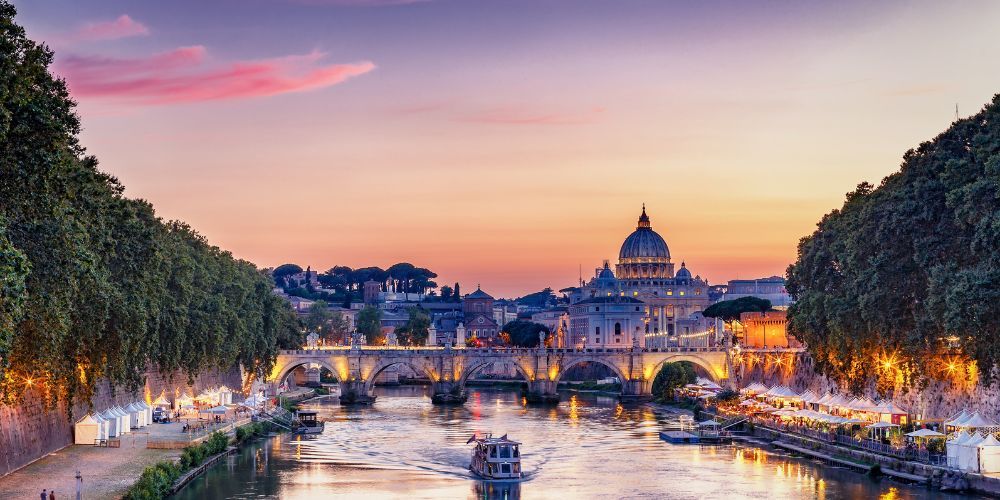
If you want to know what to see in Rome and are looking for something special, you've come to the right place. Here are all the curiosities, unusual and bizarre places to visit in our beautiful capital. Have you visited Rome several times and have you already seen the city's most important sights? Can't bear to be dragged along by hordes of tourists invading the capital's most famous areas? Or are you looking for a solution to live this experience in a unique way? For these and other reasons, we have compiled a list of unusual and special places, but above all different itineraries, of different days according to your needs, to give you the chance to discover the main things to see in Rome. Let us be clear: we are not trying to point out things that no one has ever mentioned.
We just want to give you some ideas about lesser-known and interesting things to do in the city and places that are not usually covered by traditional tours. But at the same time we want to give you the chance to see the most popular places exclusively. We can guarantee one thing: all these special features of what to see in Rome are absolutely fascinating and surprising! If you are in the city and have little time to visit, if you are motivated to organise a tour of the capital without just getting to know it well, we recommend you discover our itineraries on what to see in Rome.
What not to miss in Rome: its history in brief
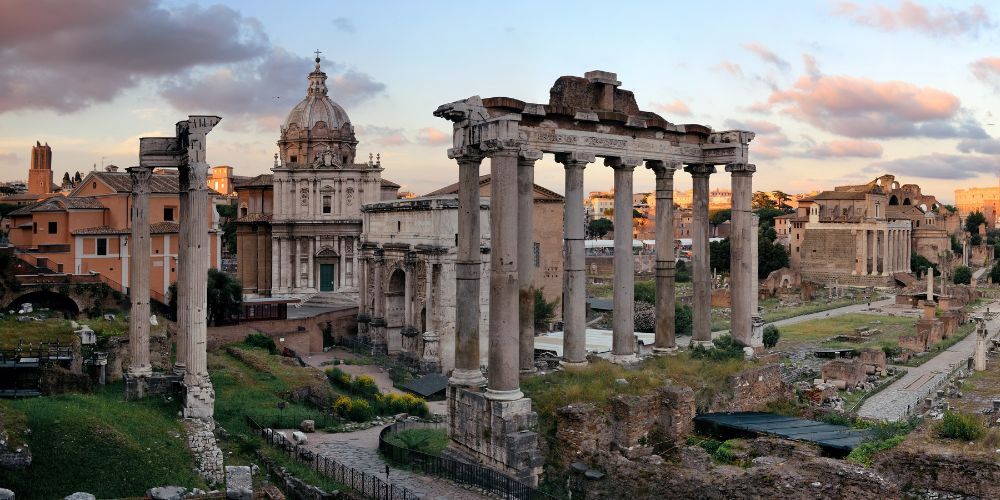
By definition it is the Homeland of the Urbe, Caput mundi and Eternal City. The heart of Catholic Christianity, it is the only city in the world with an entire country of its own, an enclave of the Vatican, as well as the seat of the Sovereign Military Order of Malta, a legal entity under international law.
Roman magic has been written about for centuries in the words of poets and writers and magnificently presented in the works of great artists. The eternal and mysterious capital envelops its visitors in a pleasant embrace and it is no coincidence that millions of tourists throw a coin into the Trevi Fountain, hoping to visit again. Because in Rome, remembering the words of Goethe, everything is as you imagined it and everything is new.
If you still don't know it or want to dive back into its magic, we will try to briefly tell you about its profile, its soul, its colours.
The birth of Rome and the seven hills

According to legend, the birth of Rome is attributed to Romulus and Remus, twin sons of Rea Silvia and the god Mars, who were abandoned and suckled by a she-wolf and later adopted by the shepherd Faustulus and his wife Acca Larentia. When the twins grew up, they decided to found a city: to know who should govern, they used the will of the gods through the flights of auspicious birds. Remus saw six vultures on the Aventine, while Romulus saw twelve on the Palatine and became the first king of Rome in 753 BC.
From the Palatine, the city would extend over the seven hills we all know: Palatine, Aventine, Capitoline, Quirinal, Viminal, Esquiline and Caelian.
Cultural and historical heritage: Monuments to visit in Rome
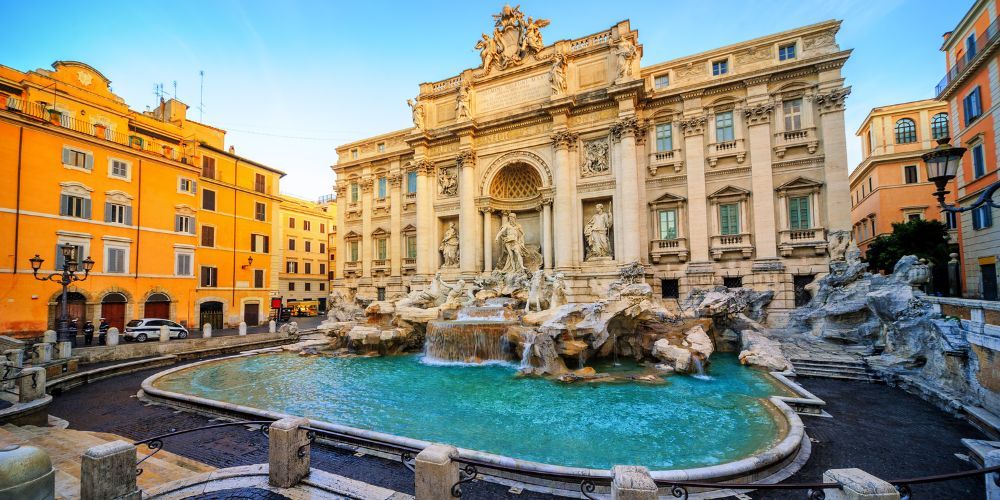
Rome's magnificent monuments, hundreds of churches and magnificent fountains create its grand profile, making it the city with the greatest historical, archaeological and architectural wealth in the world, with more than 16% of the world's cultural heritage and 70% of it of Italian origin.
Its historic centre, bounded by the perimeter of the Aurelian Wall, was inscribed on the UNESCO World Heritage List in 1980 with the extraterritorial properties of the Holy See in the city and the Basilica of St Paul Outside the Walls.
The heart of Catholic Christianity, Rome is the only city in the world that has an enclave of a foreign power, the Vatican: this is why it is often referred to as the ‘Capital of two States’.
The 5 most visited monuments in Rome
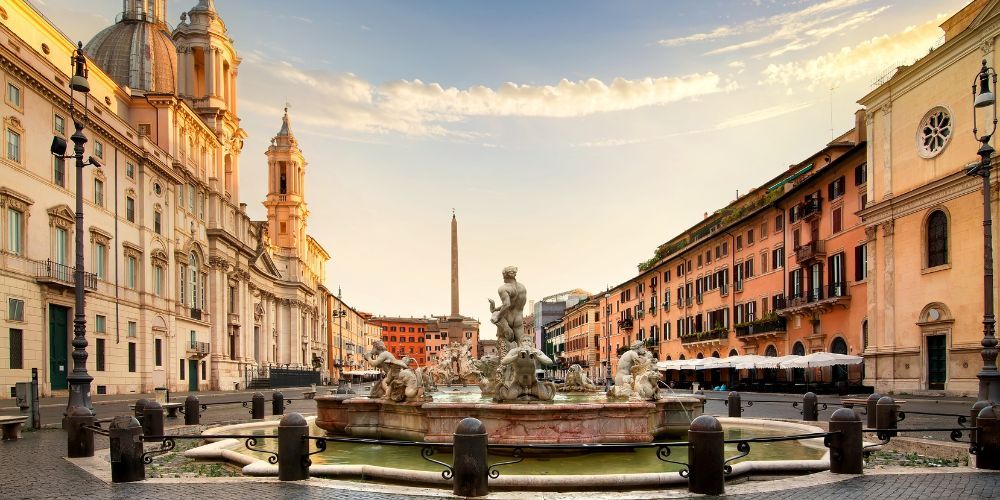
These are the must-sees and definitely among the top things to see in Rome on your first visit:
- The Colosseum
- The Pantheon
- The Roman Forum and the Palatine
- The Trevi Fountain
- Piazza Navona
Natural areas: Places to visit in Rome
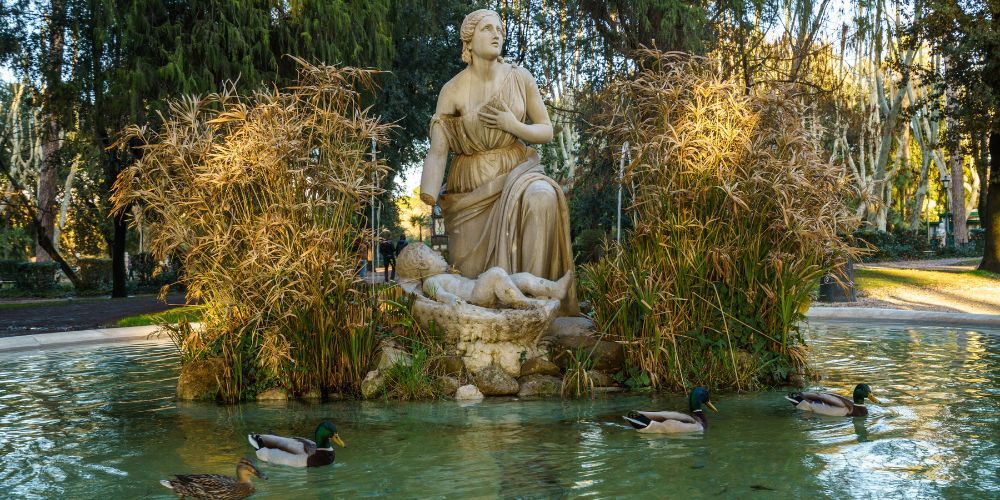
Rome is one of the greenest cities in Europe, a treasure trove of art, full of parks and gardens, rich in vegetation and decorated with archaeological remains, sculptures, lakes, fountains and magnificent villas. Enchanting green areas that make the capital a city in every season: from beautiful flowers in spring to romantic leaves in autumn, from invigorating walks in winter to pleasant relaxation in summer.
In fact, among the places to visit in Rome we also include the historical residences of the most important noble families, such as: Villa Borghese, Villa Doria Pamphilj, Villa Ada Savoia and Villa Torlonia. Above all, among what to see in Rome are its historical, archaeological and natural green lungs. Among the many, the vast regional park of the Appia Antica stands out, and above all, the suggestive viewpoints over the city, such as: the Janiculum Hill, the Pincio Hill and the Orange Garden.
All useful information for visiting Rome
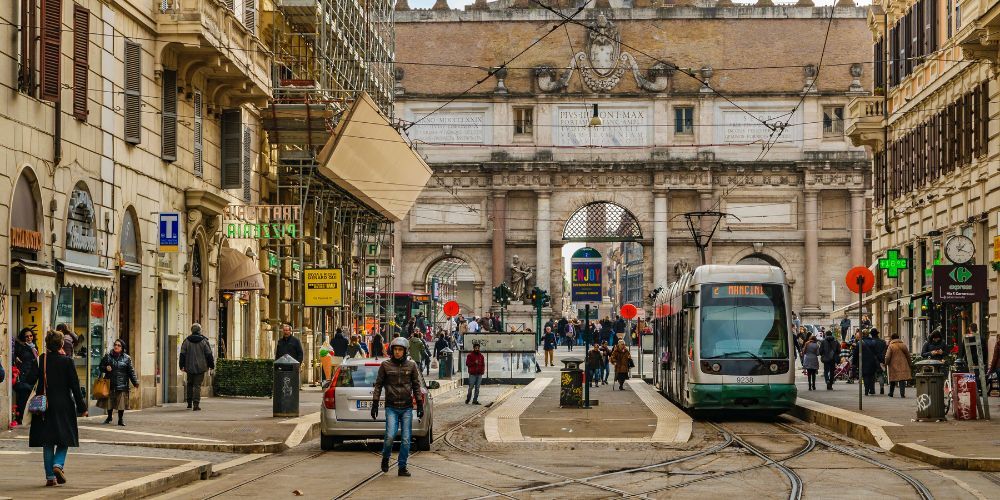
Useful information on how to visit Rome easily, taking advantage of all that the city has to offer: from tourist maps to tourist information services, from access to cultural and open-air sites to public transport and safe movement.
If you make the effort to visit Rome, you will soon discover that this city brings with it a thousand virtues but also a thousand difficulties. For those visiting Rome for the first time, finding their way around its streets can be difficult. The city is not only a veritable open-air museum, full of monuments and marvellous sights that are difficult to see if you only travel on foot. Instead, you can choose between different types of public transport to get around Rome. First of all, we recommend travelling by metro!
The traffic in the capital can be incredible and you might get stuck in endless traffic jams when you take the bus. Or if you want to get around Rome from the surface there is another solution. There are plenty of tram lines and you won't have any more traffic problems. Also, if you want to make the most of every minute you spend in the city, you can hop on a tourist bus! Equipped with Wi-Fi and audio guides, Rome and its main attractions are at your feet. Best of all, you can get off whenever you want. Discover the Visit Rome Pass!
Discover the Visit Rome PassSome itineraries on: What not to miss in Rome
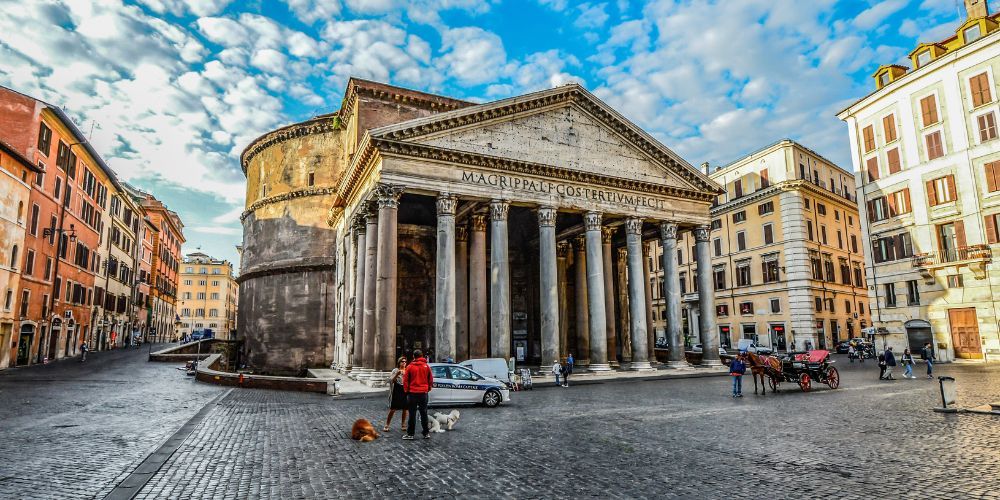
Take advantage of the thousand faces of Rome and find out more about all the recommended itineraries by theme, leisure or according to the time you have available. ‘Rome wasn't built in a day’, but if you only have one day to spare, let me help you make the most of it!
You often ask us for advice on the wonderful Eternal City, and we always struggle to think of what to see in Rome, for a first visit, especially when time is short. Finding your way around Rome's vast historical-architectural heritage is a daunting challenge for anyone wishing to visit the city, especially since you usually have relatively little time at your disposal: however, there is a list of the most important landmarks for everyone.
Discover what to see in Rome in 24 hours
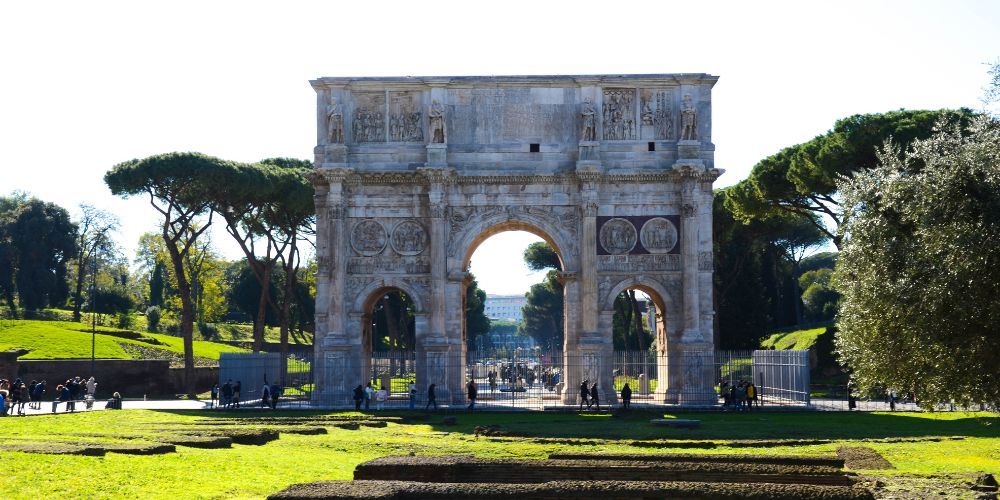
It may be a classic saying, but Rome is truly an open-air museum like no other city in the world. To walk around Rome is to step into the past, first the Roman era, then the Middle Ages, the Renaissance, the Barracks and, to a lesser extent, the present. A city that, for better or worse, has remained unchanged for centuries, full of contrasts, chaotic, noisy, but genuine and sincere like few others. In order not to get lost and to know what to see in Rome in 24 hours, we propose an itinerary that starts in the morning and ends in the evening.
Monuments to visit in Rome in 2 days

Colosseum, Imperial Forum, Circus Maximus, Imperial Baths, Trinità dei Monti, Sistine Chapel, Pantheon. Who does not know the symbols of the great beauty of monuments to visit in Rome? A visit to Rome is a must when visiting cities of art, but Rome is above all special for all those who visit to honour it. You can be so in love with this city that you go there diligently and reach the point where even if you have never been there you can explore Rome's main attractions with total ease. Discover with us what to visit in 2 days in Rome. Imperial, boundless, dominant, born to make and be history. Praised by the best artists, queen of cinema, home of good food. This is probably where the idea of an open-air museum comes from. Rome is a timeless wonder, full of glimpses and unusual and secret places that will take your breath away!
Places to visit in Rome in 3 days

Rome is so big that it can offer so many unusual experiences. In this article we propose itineraries that you can take on foot (or briefly by bus) during three days in Rome, during which you can let yourself be delighted by the treasures of some must-see areas, such as: the Quartieri Trieste, Parioli, Coppedè, Pigneto and Testaccio. But also Villa Ada, the Catacombs of Priscilla, the Casina delle civette, the murals dedicated to Pier Paolo Pasolini, Villa Gordiani, the Underground Basilica of Porta Maggiore and the Basilica of San Paolo Fuori le Mura. Unusual and alternative places that are definitely worth seeing and that will give you a unique and different experience, like the Tiber Island!
Top things to see in Rome at the weekend
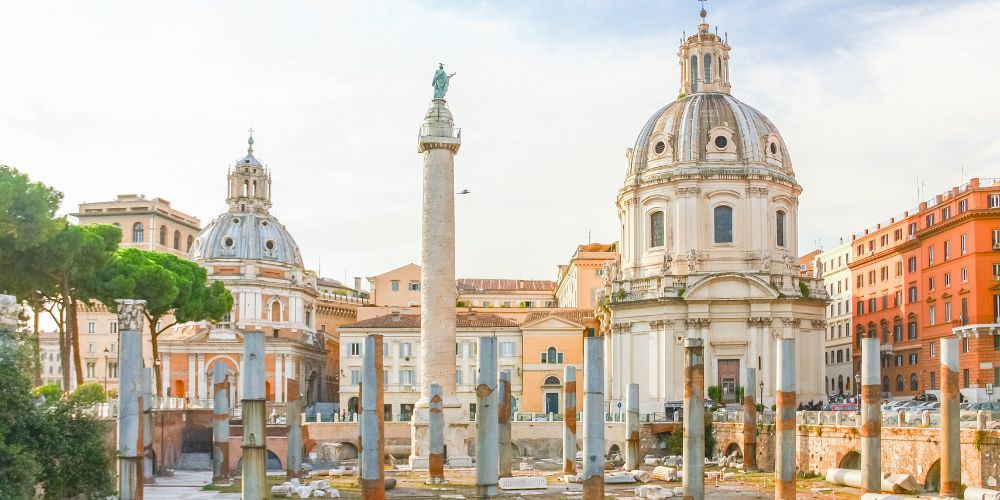
Rome's iconic monuments present themselves, but in their shadows lie little-known treasures and entire neighbourhoods to be discovered. This trip pays homage to the icons of ancient Rome and uncovers some lesser-known gems. Find out what to do in Rome over the weekend, our itinerary starting with an arrival in the city on Friday night where you will discover the Capitoline street food, moving on to a Saturday dedicated to the most important architectural works and ending on Sunday between art and spirituality.
What not to miss in Rome: what to see in 5 days
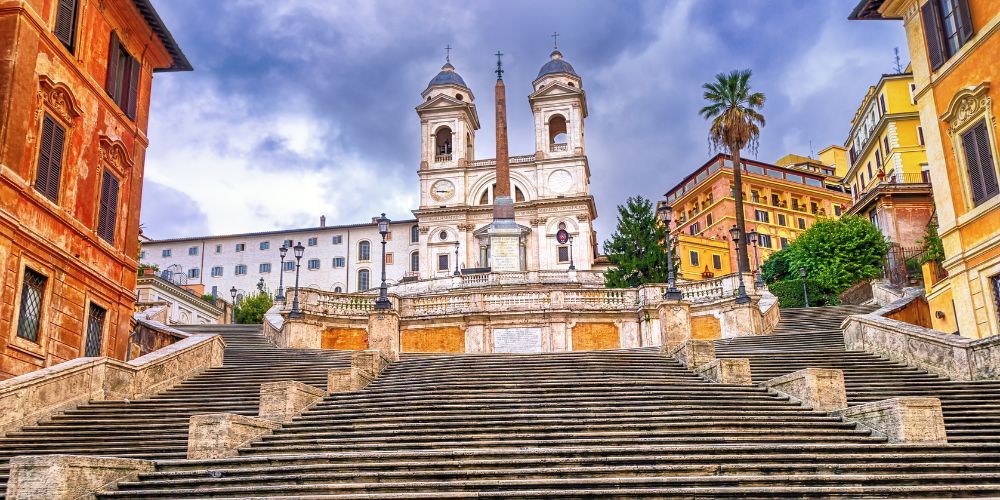
Discover what to see in Rome in 5 days, a long weekend where you will discover 15 places or curiosities about the eternal city. Don't miss the opportunity to walk down the most famous staircase in the world, to look through a hole in the three-state lock, to stroll through one of the most evocative places, the Vicus Sceleratus, and much more. Spend five fantastic days in the Italian capital.
Places to visit in Rome in a week: what to do and see
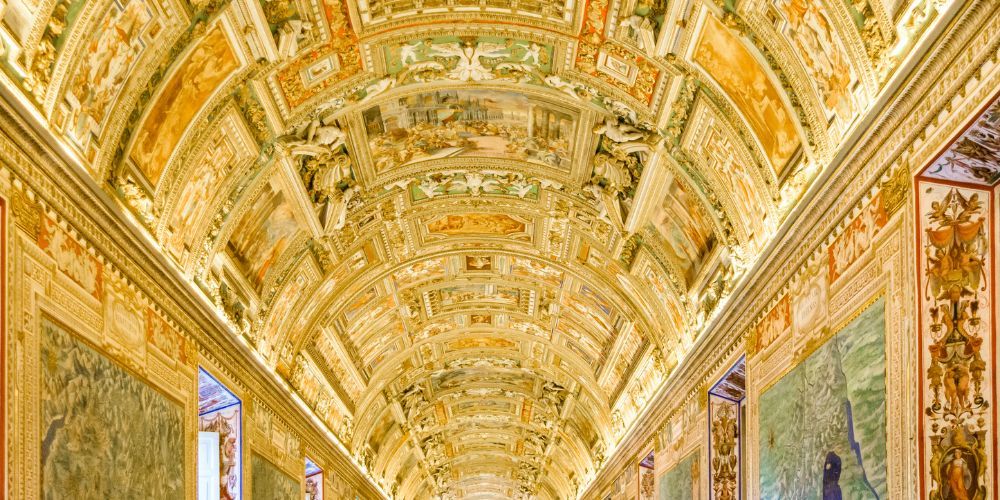
If, on the other hand, you want to know what to do and see during a week in Rome, know that there are countless places to visit in Rome and that they are the perfect destination for those who want to take a journey through the history of the Roman Empire, as well as the Renaissance art of Borromini and Bernini. Not to forget the folklore of modern Rome, the Vatican Museums and much more. You just have to find out by reading the article.
Rome what to visit: out-of-town trips within 100 km
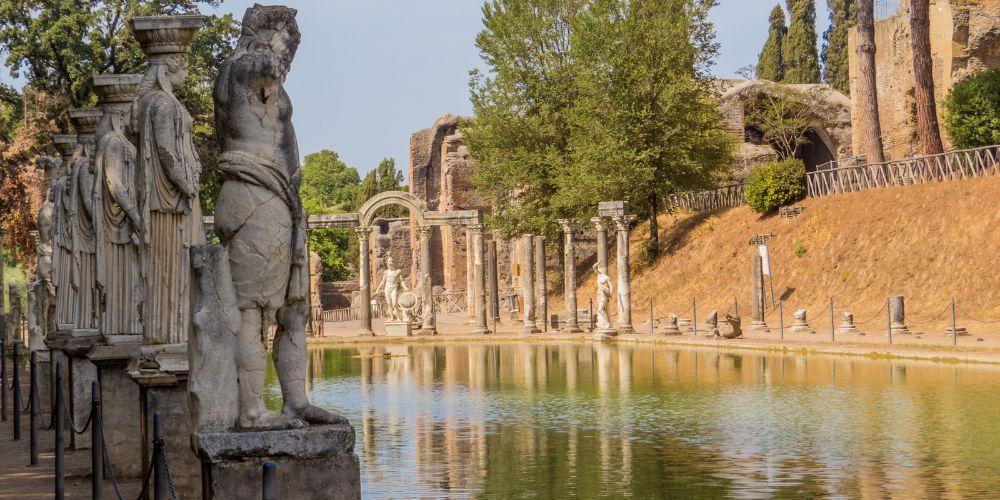
Rome is wonderful and the places around it are unique. Lazio is home to endless natural beauty, offers a variety of cultural experiences and historical sites suitable for tours and day trips from the Eternal City. Discover out-of-town trips to Rome: the 10 most fascinating places within 100 km. Experience pleasant moments amidst ancient villages, the sea, picturesque parks and beautiful lakes.
What to see and do in Rome on a short holiday
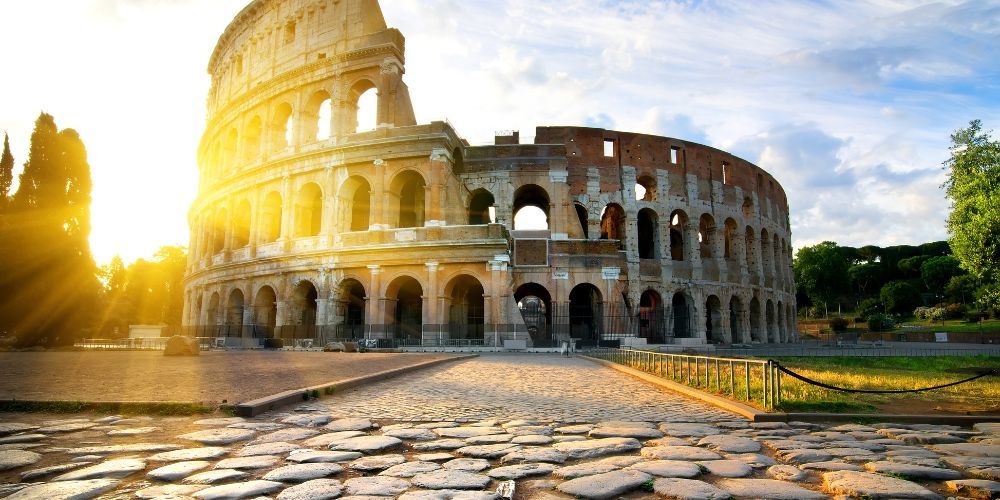
If you only have a weekend at your disposal or if you only decide to spend this time in Rome, this guide is ideal for you.
One or two days in Rome is definitely not enough time to enjoy the city as it should be, but if this is the time you have available, you should still try to make the most of it, right? That said, you can see the points of interest on a short holiday in Rome. Accordingly, we have developed a guide. In this tour, we will show you the best sights in the Eternal City and, who knows, it might make you want to come back for more, and with more time.
What can you do and see in Rome on a short holiday? The city offers a myriad of opportunities, a myriad of museums and monuments, but the most important thing is to be able to enjoy every moment of this wonderful city. We will show you and introduce you in this short time to its history, art, architecture, culture and traditions that have lasted for centuries. You will certainly take home every single feeling and explosive emotion that this city can give you. Therefore, we provide you with ten things to see and do in one day in Rome and what to see and do in Rome in two days if you manage to add a few extra hours!
Beautiful places in Rome: discover what to do and see as a Local
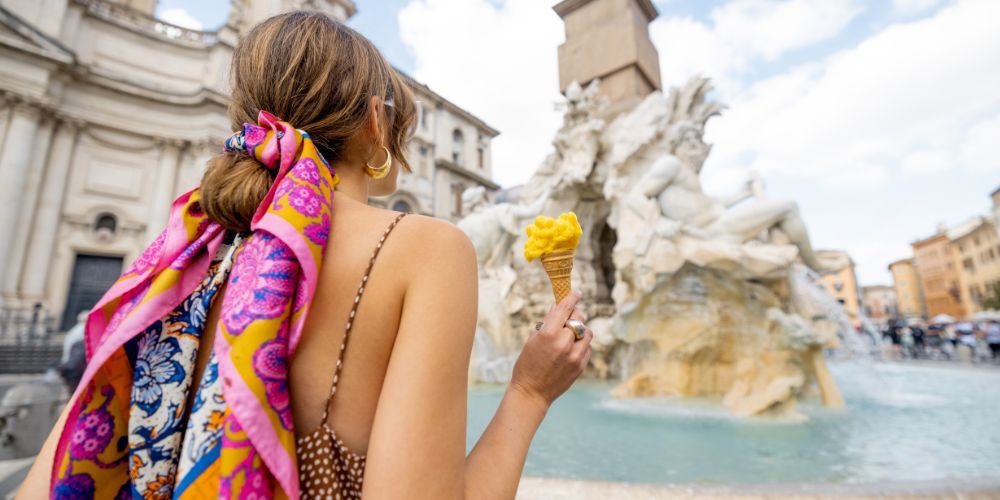
There are so many beautiful places in Rome, plus it is one of the most loved and respected holiday destinations in the world. There is so much to see and do in Rome: museums, churches, enchanting sights, historic buildings and exceptional cuisine. Although everything is beautiful, it is always more advantageous to imitate the locals and get off the traditional tourist trail to fully enjoy a city. That is why we have compiled a list of our favourite activities and places to make you feel like you are in a Roman city. Want to know what things to do and see in Rome like a local you can do as a real tourist?
We'll take you to the romantic rooftop terrace where you'll discover the tradition of the nocturnal cornetto and the Roman's favourite sporting activities. But we will also introduce you to lesser-known parks, discover the murals dedicated to footballer Totti, where to shop in the local markets, and where to sample the local cuisine.
Where to Stay in Rome
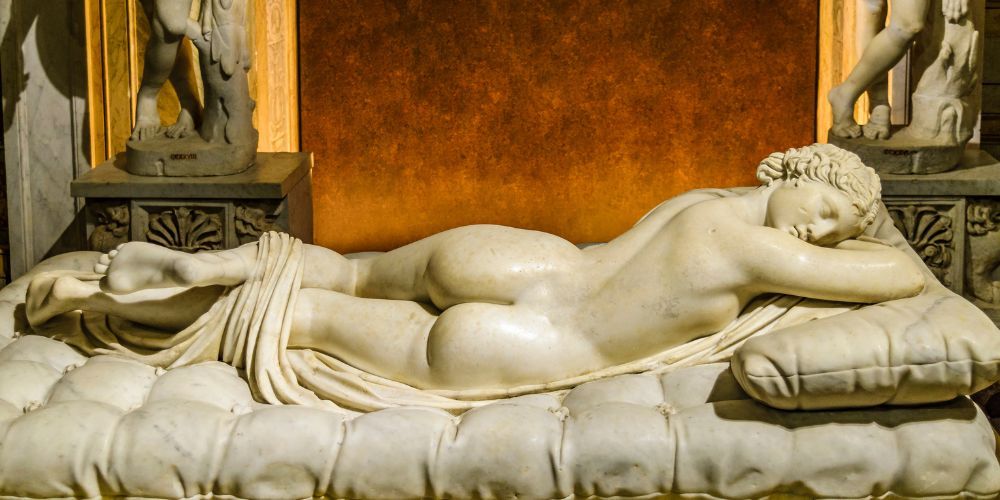
If you have already started looking for accommodation in Rome, you may have noticed that it is quite an expensive city. Not surprisingly, one of our first tips is to book accommodation as early as possible to avoid paying much more after your departure. We will help you find the best place to stay in Rome according to your wishes and needs, suggesting some establishments to check their availability for a quicker search. First of all, we will give you a brief overview of Rome and suggest where to find suitable accommodation for your needs such as where to sleep as a couple or with your family, but also how to get to the city centre from the airport and what to visit.
What to see and do in Rome with children

Are you planning to spend a weekend in Rome with your family?
The Eternal City is rich in history and culture, with plenty to do and see for children and adults alike. With the little ones, you can stroll peacefully through the historic centre, discover the parks, enjoy the artistic beauties and museums that our capital has to offer, but you have to do it at the right time and on their own terms. People travelling with children certainly have different needs. There is no doubt that you will need to entertain them so that they do not get tired, but above all that they have fun without getting bored. This, too, is satisfactory in the capital, thanks to its parks and green areas, theme parks and a large number of attractions that can attract children. You just have to find out what to do and see in Rome with children, we have thought of everything, you just have to see the recommended attractions. When visiting Rome, don't forget to see the historic centre. It is difficult to give a precise route because every corner of the centre is so enchanting. However, there are some suggestions in the article that you can consider visiting while walking with your children.
Here are 10 things to see in Rome: unmissable places to visit to get to know it better
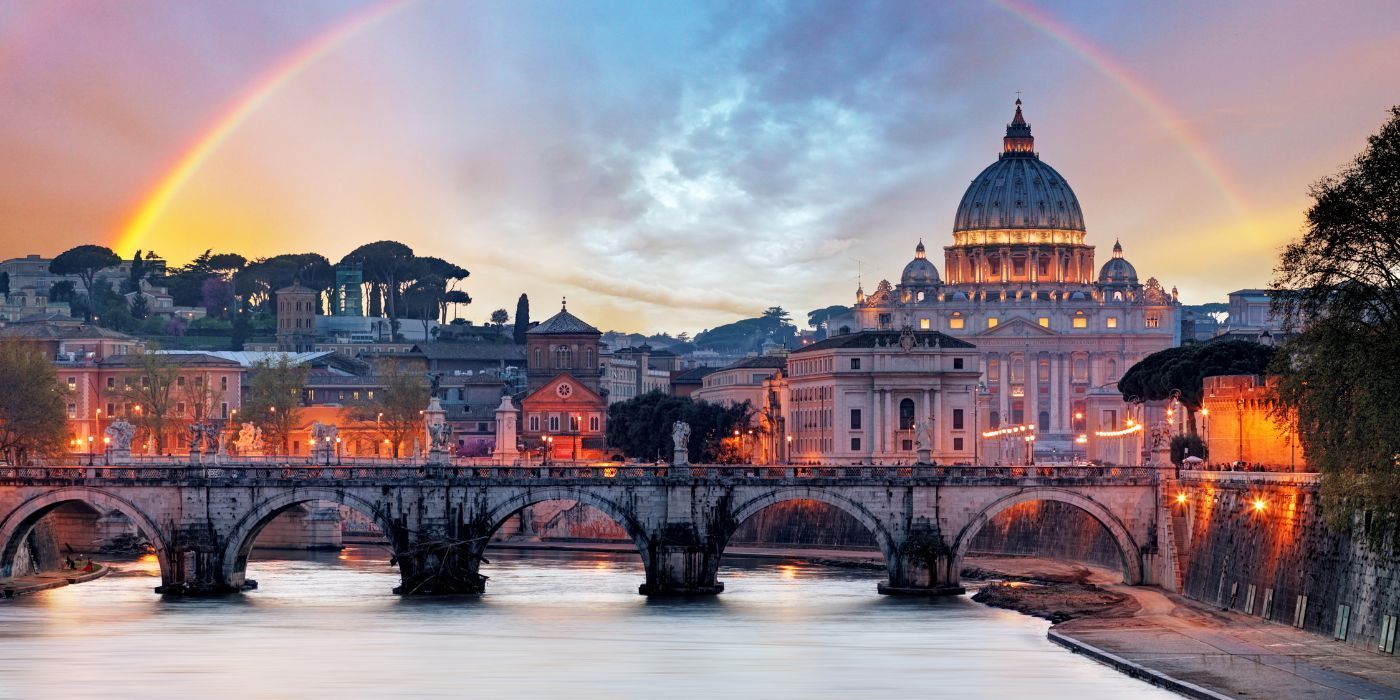
Rome, the Eternal City: a city with a thousand faces, rich in history and culture, charm and contradictions, one of the most iconic capitals in the world.
Among monuments, palaces, churches, archaeological remains, gardens and beautiful landscapes it is difficult to choose what to see, especially if you have not so much days available.
We have selected 10 things to do in Rome that you can’t miss in 2024: read on if you want to know the best attractions and must-see places in the capital of Italy.
10. A journey through the history of art and nature on the Pincio

Borghese Gallery is located in the homonymous seventeenth century villa that stands on Colle Pincio and is surrounded by a huge park from which you can enjoy an incomparable view of Rome. Inside there is a rich collection consisting of sculptures, bas-reliefs, ancient mosaics, paintings and sculptures and works of great value of the major Italian artists: among all we remember Raffaello, Tiziano, Caravaggio, Correggio, Antonello da Messina and splendid sculptures by Gian Lorenzo Bernini and Canova.
Get your tickets!9. Between history and legend: the secrets of the oldest prison in Rome

The Mamertino Prison is the oldest prison in Rome: it dates back to the VIII-VII century BC and is located in the Roman Forum, at the foot of the Capitol and currently under the more recent church of San Giuseppe dei Falegnami. A non-random location in a place that was the center of public life, a real warning of the fate that awaited the Empire's enemies. In this prison were imprisoned illustrious people, sentenced to death by strangulation or beheading: Giugurta, king of Numidia, Vercingetorix king of the Gauls, the conspirators of Catilina and according to tradition also the Apostles Peter and Paul who spent their last days here before being martyred.
Get your tickets!8. From mausoleum to museum: the monument that tells the story of two thousand years of Rome
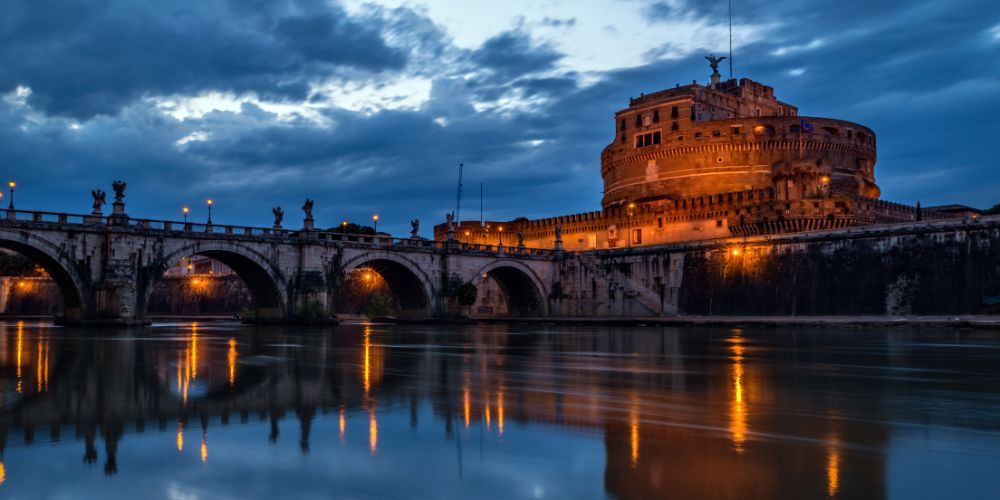
Castel Sant'Angelo was built around 123 A.D. as a tomb for Emperor Adriano and his family. Preserved until today after a series of transformations is an incredible open book on which you can read the whole history of Rome through the various layers of eras and styles: from funeral monument to armed stronghold in defense of the capital, from a prison for the enemies of the papacy a splendid Renaissance residence, from barracks to museum. It stands on the right bank of the Tiber, a short distance from the Vatican, and is connected to it by the fortified corridor of the ‘passetto’.
Get your tickets!7. From pagan monument to christian basilica: the temple of all the gods that defies the centuries
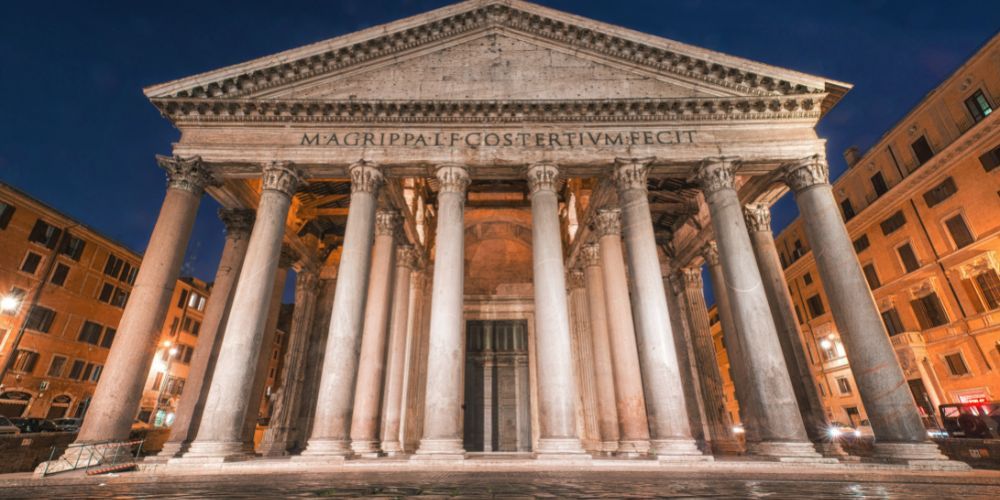
The Pantheon was a temple originally dedicated to all past, present and future gods and was built in 27 B.C. In 80 and 110 A.D. two fires damaged the previous building: it was rebuilt by Emperor Hadrian around 112/124 A.D. At the beginning of the seventh century the Pantheon was donated by the Emperor to Pope Boniface IV and later was converted into a Christian Basilica, status that has allowed the building to arrive almost intact to the present day. In addition to stunning architecture, there are many tombs of famous people: here we find in fact Raffaello Sanzio, Annibale Carracci, Arcangelo Corelli, as well as the burials of Vittorio Emanuele II first King of Italy, his son Umberto I and Margherita di Savoia.
Get your tickets!6. The life of the emperors in ancient Rome: sacred and profane in the eternal city
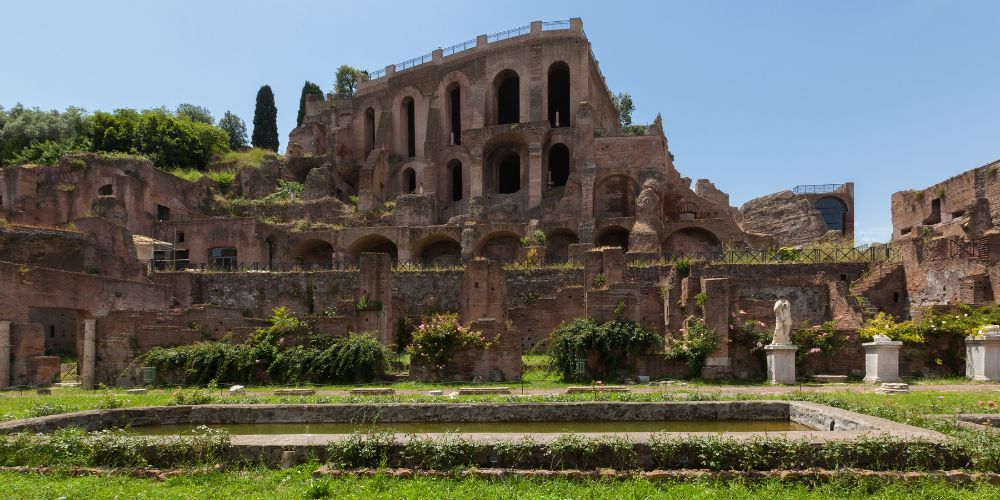
The Palatine is one of the seven hills of Rome: it is one of the oldest areas of the city and preserves archaeological remains dating back to the Iron Age, the oldest evidence of the original settlement that gave life to the city of Rome. Since the second and first centuries B.C. it became the residential district of the Roman aristocracy: here the most sumptuous villas were built, richly decorated with paintings and mosaics. Later on this hill were built the imperial palaces: the Domus Tiberiana, the Domus Transitoria, the Domus Aurea, and the Domus Flavia. Also in the Renaissance the noble class built houses, gardens and vineyards on the Palatine. Some of the most interesting archaeological finds from the excavations of this site are now preserved in the Palatine Museum.
Get your tickets!5. The centre of public life: where the democracy of ancient Rome was born

The Roman Forum is an archaeological park located near the Colosseum. From the end of the 7th century BC it was the real centre of the capital public life: built on the reclamation of a swampy area, it initially housed institutional buildings where the main political, religious and commercial activities took place, and later in the second century B.C. the civil basilicas that housed the judicial activities and the commemorative monuments: the Temple of Vespasiano and Tito, the Temple of Antonino Pio and Faustina, the Arch of Settimio Severo, up to the Temple of Romolo, the Basilica on the Velia and the Column in honor of the Byzantine emperor Foca. Subsequently the area underwent a progressive burial and the first archaeological excavation sites will begin only after the unification of Italy.
Get your tickets!4. Between gladiators and wild beasts: the theatre of blood and fun
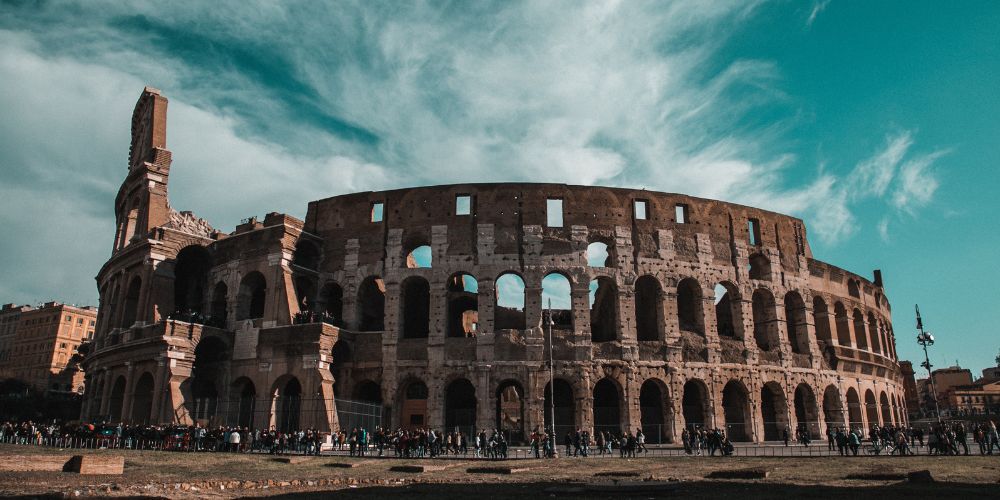
The monument symbol of Rome, the Colosseum needs no introduction: as the Vatican is the most visited tourist attraction. Used for gladiator performances, re-enactments of historical battles, fights between exotic animals or simply for theatral performances, it could hold 50 thousand seated spectators and up to about 80 thousand standing. It remained in operation for more than 500 years, until the sixth century, from here on the Colosseum was the victim of looting, earthquakes and during the Second World War bombing. Transformed over the centuries and according to needs in fortress, church, warehouse and cemetery is now a UNESCO World Heritage Site and is considered one of the 7 New Wonders of the World.
Get your tickets!3. The city of water: the secret of the most beautiful fountain in Rome

Not many people know that under the Trevi Fountain, one of the favorite destinations for tourists visiting Rome, there is a network of underground tunnels and an ancient aqueduct whose tank still feeds the fountain. To visit this archaeological wonder you have to go down to about 9 meters deep: the "“Vicus caprarius - the city of water" is not only an aqueduct, but also an archaeological testimony of the ancient city. During the visit, in fact, you can admire not only the ancient Castellum Aquae, large reservoir of the Virgin Aqueduct, but also a residential complex dating back to the time of the emperor Nerone. In the small museum of the archaeological area there are also exhibits found during the renovation of Cinema Trevi.
Tours of Trevi's Fountain2. The largest museum complex in the world: sacred and secular art at the service of the papacy
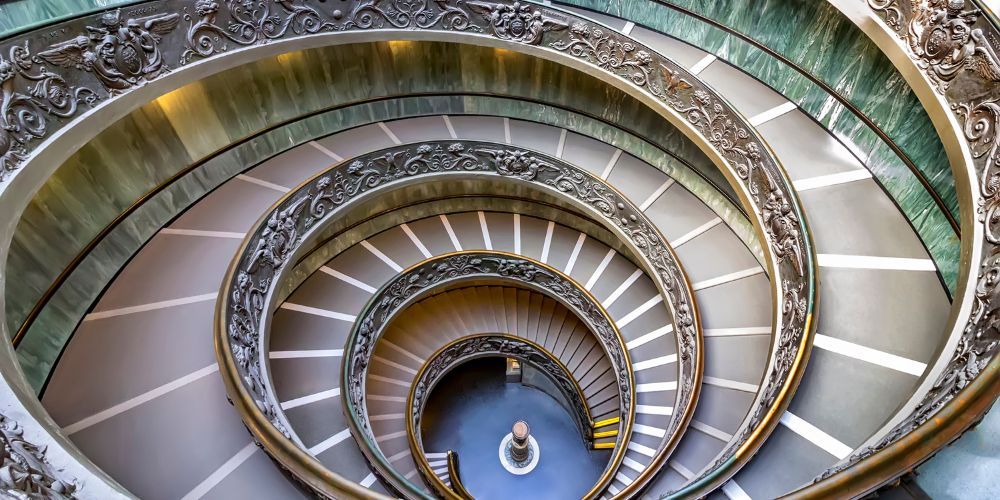
The Vatican Museums are among the most important art collections in the world and visiting them is a must. Currently they are visited by about 6 million tourists every year, and develop with four 4 different routes that end all in the Sistine Chapel. The Vatican Museums are not only a real casket of art that collects more than twenty centuries of history and priceless works, but also contain some of the most significant places from the artistic point of view, such as the Sistine Chapel, where Michelangelo Buonarroti spent almost ten years of his life to complete his paintings, the Raphael Rooms, the Bramante Staircase, the Galleries of Candelabra, Tapestries and Maps.
Get your tickets for Vatican Museum1. The heart of Christianity: beauty and power of the papacy

The Saint Peter’s Basilica is the largest of the papal basilicas, representative seat of the Catholic Church and at the same time home of the Pope. The present Basilica was built on a nucleus dating back to the 329 century A.D. built by the emperor Constantine in the place where the apostle Peter was buried. The Renaissance Popes using the work of great artists such as Bramante, Raphael, Michelangelo, Bernini and Maderno built the new Basilica: from 1506, over a period of more than a century, was transformed with the succession of artists and architects to take on the appearance that we can admire today. Among its naves and inside the chapels you can find not only numerous works of art of inestimable value such as the Pietà by Michelangelo but also the tombs of Saint Peter and his successors popes.
Get your tickets!15 Things Not to Do in Rome

We may be biased, but we think Rome is one of the most beautiful holiday spots in the world. With incredible ancient monuments and majestic Renaissance artworks, breathtaking scenery and great food that will have you dying of taste. Discover the 5 tastiest street food in Rome, a trip to the Eternal City can be a life-changing experience. Nevertheless, a visit to Rome may not be so idyllic if you don't know your way around the Eternal City: your holiday, if you don't rely on an expert guide and stay away from the various possible tourist traps, can become an unforgettable adventure for the worst of reasons.
To avoid this and get the most out of your experience like Fellini's ‘La Dolce Vita’, here are 15 things you should never do in Rome.
About the author
Written on 18/01/2024

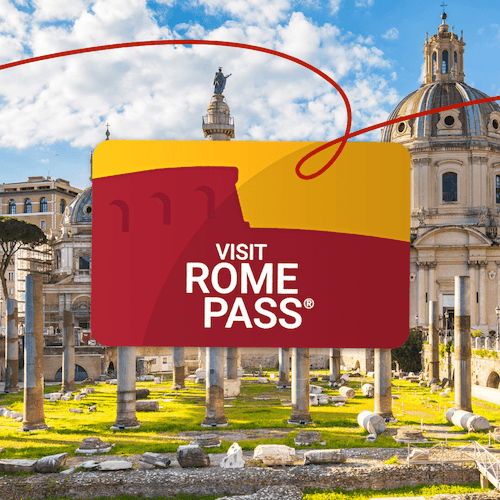


Sara Milanolo
What are the 10 things to see in Rome that you absolutely cannot miss in 2024? We have selected the best attractions in the capital for you.